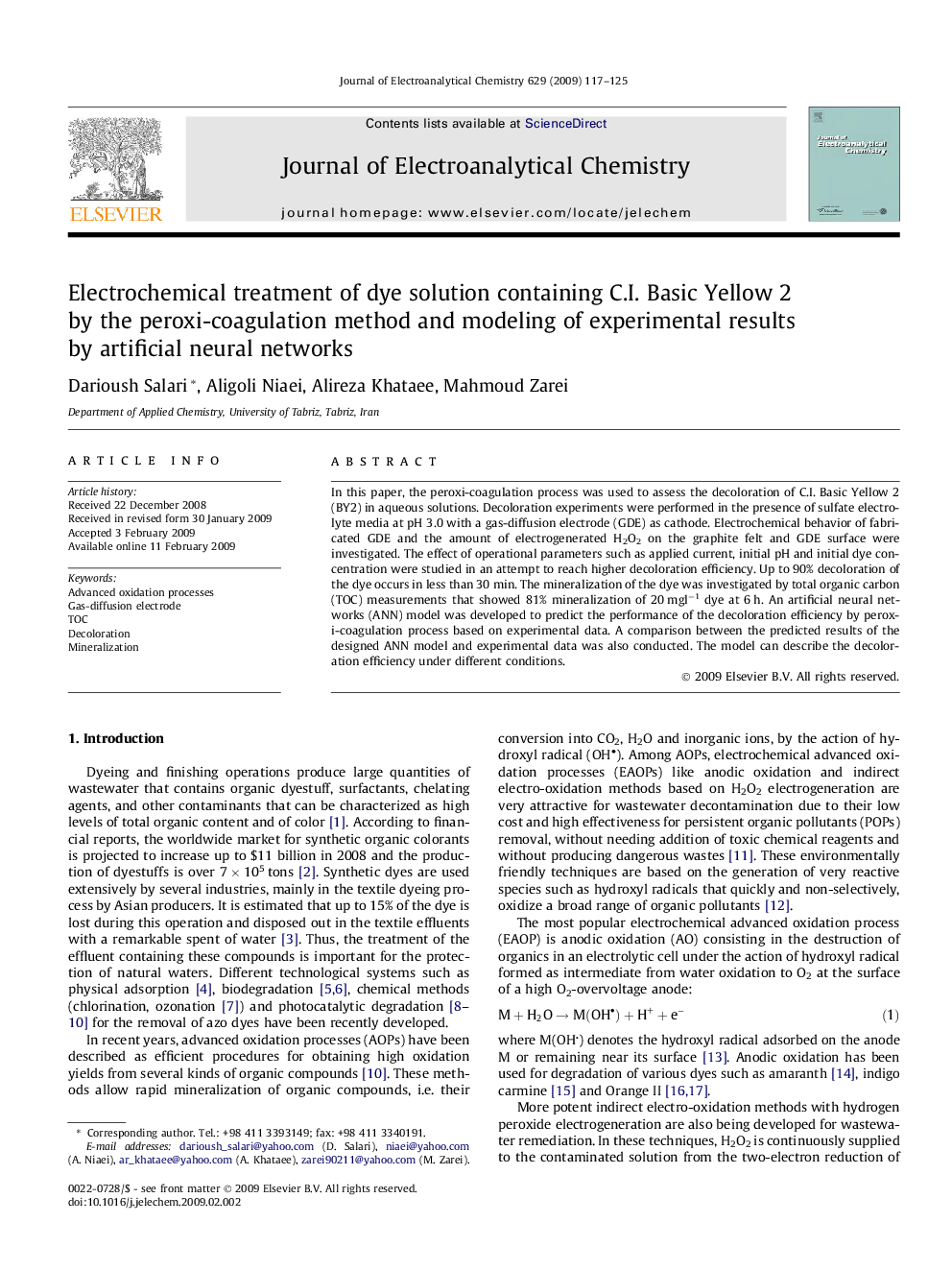| Article ID | Journal | Published Year | Pages | File Type |
|---|---|---|---|---|
| 220497 | Journal of Electroanalytical Chemistry | 2009 | 9 Pages |
In this paper, the peroxi-coagulation process was used to assess the decoloration of C.I. Basic Yellow 2 (BY2) in aqueous solutions. Decoloration experiments were performed in the presence of sulfate electrolyte media at pH 3.0 with a gas-diffusion electrode (GDE) as cathode. Electrochemical behavior of fabricated GDE and the amount of electrogenerated H2O2 on the graphite felt and GDE surface were investigated. The effect of operational parameters such as applied current, initial pH and initial dye concentration were studied in an attempt to reach higher decoloration efficiency. Up to 90% decoloration of the dye occurs in less than 30 min. The mineralization of the dye was investigated by total organic carbon (TOC) measurements that showed 81% mineralization of 20 mgl−1 dye at 6 h. An artificial neural networks (ANN) model was developed to predict the performance of the decoloration efficiency by peroxi-coagulation process based on experimental data. A comparison between the predicted results of the designed ANN model and experimental data was also conducted. The model can describe the decoloration efficiency under different conditions.
